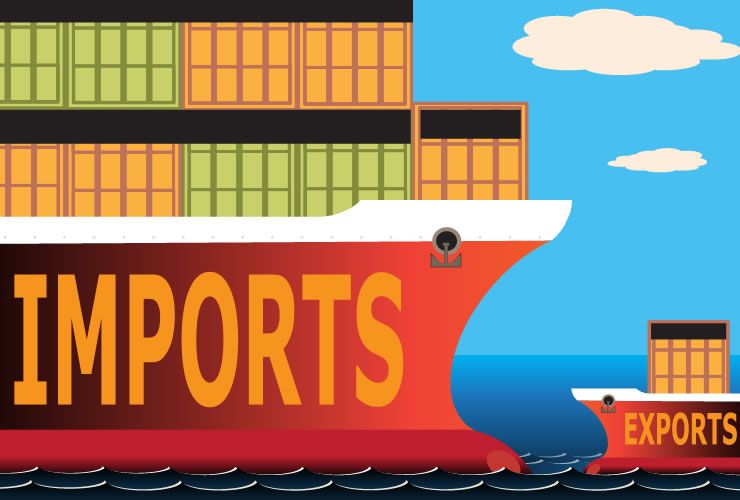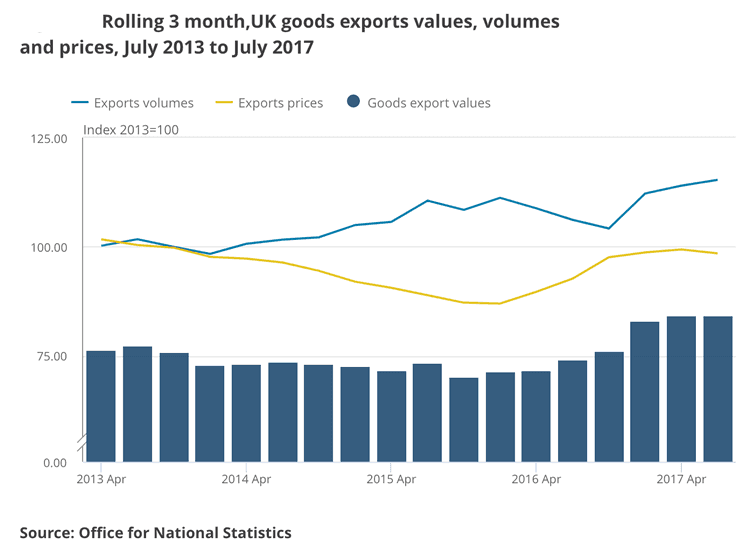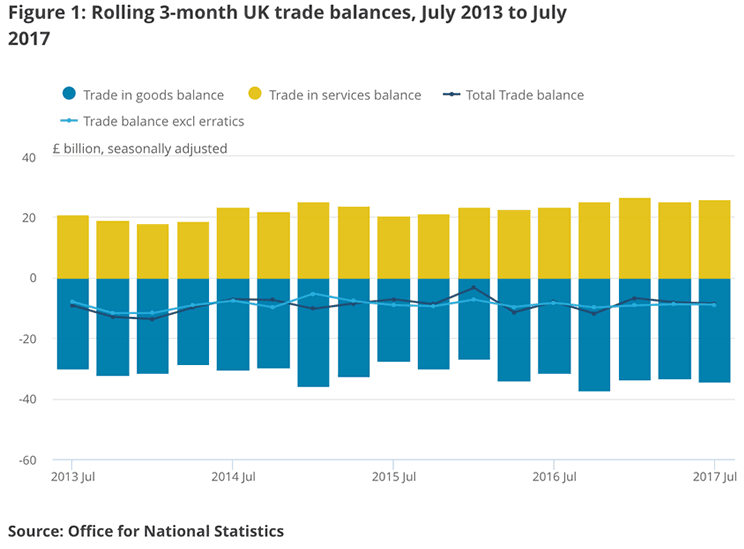UK Trade Data Confirms Significant Deficit, Lays Conditions for Pound-Euro Parity

The British Pound has a problem - it is not yet weak enough to balance the deficit that exists between the UK’s exports and imports and will therefore have to go even lower to achieve a fundamental grounding.
The ONS reports that the UK’s total trade deficit in goods and services remained unchanged at £2.9 billion between June 2017 and July 2017.
Total trade exports decreased by £0.1 billion for the period, and this will baffle those economists who had expected to see a more robust improvement in UK exports.
But if we look at the quarterly picture there are some improvements.
Between the 3 months to April 2017 and the 3 months to July 2017, total trade exports increased by £0.9 billion, largely due to an increase of £0.8 billion in trade in services exports; while total trade imports increased by £1.3 billion, largely due to an increase of £1.2 billion in trade in goods imports.
“The trade figures were pretty disappointing,” says Ruth Gregory, UK Economist at Capital Economics. “Despite a 4% or so monthly gain, the three-month export volumes growth rate (excluding oil and erratics) fell further from 1.7% in June to just 0.5% in July, while imports volume growth picked up from -1.1% to 0.1%. This suggests that net trade is providing little contribution to GDP growth.”

The lacklustre export growth is just not strong enough to whittle down the deficit.
On a quarterly basis, between the 3 months to April 2017 and the 3 months to July 2017, the value of the total UK trade deficit widened by £0.4 billion to £8.6 billion, primarily due to a widening of the trade in goods deficit by £1.1 billion, partially offset by a widening of the trade in services surplus by £0.7 billion.

Why the Trade Data Spells for a Lower Pound Sterling
For those pondering where the future of the Pound, there is potentially no economic fundamental that is more important.
Until exports and imports become more balanced, the Pound is liable to weakness and the Pound-to-Euro exchange rate is at risk of falling to 1.00.
At the most basic level an exchange rate is determined by the trade between two countries. When one exports more to another, the demand drives up the value of the currency, and vice versa.
The UK’s trade deficit would therefore imply the Pound should move lower. But, counterbalancing the trade deficit is the inflow of foreign investor capital. It is this component of the exchange rate dynamic that has kept Sterling at levels higher than the trade balance would imply.
What if this inflow of foreign investment capital were to dry up? Analysts warn that the impact on the Pound would be negative, particularly as Brexit creates the kind of uncertainty that might dampen capital inflows.
“We do not believe the fall in GBP is complete. Import demand remains resilient and so the trade deficit remains wide. So not only must GBP weaken further to close the deficit, it must weaken further to keep attracting capital inflows,” says David Bloom at HSBC.
HSBC do not dispute that GBP is ‘cheap’ relative to fair value, but as a tool of economic adjustment, it has to get cheaper.
HSBC look for GBP-USD to hit 1.20 by year-end 2017, and EUR-GBP to reach parity.
Get up to 5% more foreign exchange by using a specialist provider by getting closer to the real market rate and avoid the gaping spreads charged by your bank for international payments. Learn more here.
